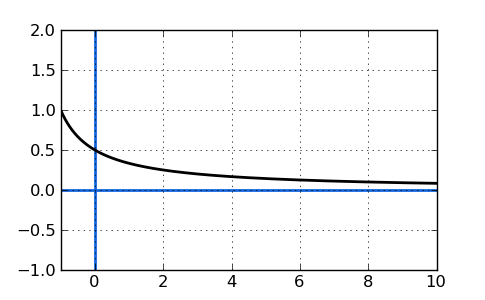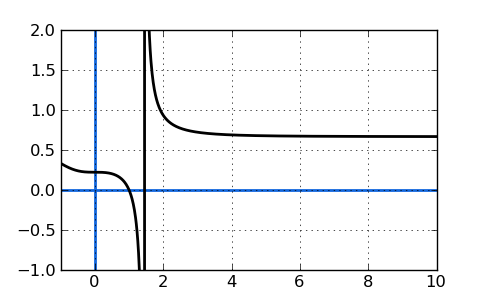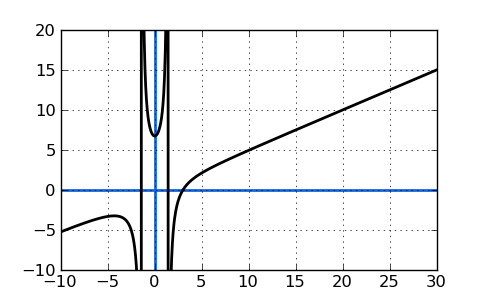

تاريخ الرياضيات

الاعداد و نظريتها

تاريخ التحليل

تار يخ الجبر

الهندسة و التبلوجي


الرياضيات في الحضارات المختلفة

العربية

اليونانية

البابلية

الصينية

المايا

المصرية

الهندية


الرياضيات المتقطعة

المنطق

اسس الرياضيات

فلسفة الرياضيات

مواضيع عامة في المنطق


الجبر

الجبر الخطي

الجبر المجرد

الجبر البولياني

مواضيع عامة في الجبر

الضبابية

نظرية المجموعات

نظرية الزمر

نظرية الحلقات والحقول

نظرية الاعداد

نظرية الفئات

حساب المتجهات

المتتاليات-المتسلسلات

المصفوفات و نظريتها

المثلثات


الهندسة

الهندسة المستوية

الهندسة غير المستوية

مواضيع عامة في الهندسة

التفاضل و التكامل


المعادلات التفاضلية و التكاملية

معادلات تفاضلية

معادلات تكاملية

مواضيع عامة في المعادلات


التحليل

التحليل العددي

التحليل العقدي

التحليل الدالي

مواضيع عامة في التحليل

التحليل الحقيقي

التبلوجيا

نظرية الالعاب

الاحتمالات و الاحصاء

نظرية التحكم

بحوث العمليات

نظرية الكم

الشفرات

الرياضيات التطبيقية

نظريات ومبرهنات


علماء الرياضيات

500AD

500-1499

1000to1499

1500to1599

1600to1649

1650to1699

1700to1749

1750to1779

1780to1799

1800to1819

1820to1829

1830to1839

1840to1849

1850to1859

1860to1864

1865to1869

1870to1874

1875to1879

1880to1884

1885to1889

1890to1894

1895to1899

1900to1904

1905to1909

1910to1914

1915to1919

1920to1924

1925to1929

1930to1939

1940to the present

علماء الرياضيات

الرياضيات في العلوم الاخرى

بحوث و اطاريح جامعية

هل تعلم

طرائق التدريس

الرياضيات العامة

نظرية البيان
Finding Horizontal Asymptotes
المؤلف:
المرجع الالكتروني للمعلوماتيه
المصدر:
www.almerja.com
الجزء والصفحة:
...
6-3-2017
2012
A horizontal asymptote is a y-value on a graph which a function approaches but does not actually reach. Here is a simple graphical example where the graphed function approaches, but never quite reaches, y=0. In fact, no matter how far you zoom out on this graph, it still won't reach zero. However, I should point out that horizontal asymptotes may only appear in one direction, and may be crossed at small values of x. They will show up for large values and show the trend of a function as x goes towards positive or negative infinity.

To find horizontal asymptotes, we may write the function in the form of "y=". You can expect to find horizontal asymptotes when you are plotting a rational function, such as: y=x3+2x2+92x3−8x+3. Horizontal asymptotes occur when the graph of the function grows closer and closer to a particular value without ever actually reaching that value as x gets very positive or very negative.
To Find Horizontal Asymptotes:
1) Put equation or function in y= form.
2) Multiply out (expand) any factored polynomials in the numerator or denominator.
3) Remove everything except the terms with the biggest exponents of x found in the numerator and denominator. These are the "dominant" terms.
Sample A: Find the horizontal asymptotes of:

Remember that horizontal asymptotes appear as x extends to positive or negative infinity, so we need to figure out what this fraction approaches as x gets huge. To do that, we'll pick the "dominant" terms in the numerator and denominator. Dominant terms are those with the largest exponents. As x goes to infinity, the other terms are essentially meaningless.
The largest exponents in this case are the same in the numerator and denominator (3). The dominant terms in each have an exponent of 3. Get rid of the other terms and then simplify by crossing-out the x3 in the top and bottom:

In this case, 2/3 is the horizontal asymptote of the above function. You should actually express it as y=2/3. This value is the asymptote because when we approach x=infinity, the "dominant" terms will dwarf the rest and the function will always get closer and closer to y=2/3. Here's a graph of that function as a final illustration that this is correct:

(Notice that there's also a vertical asymptote present in this function.)
If the exponent in the denominator of the function is larger than the exponent in the numerator, the horizontal asymptote will be y=0, which is the x-axis. As x approaches positive or negative infinity, that denominator will be much, much larger than the numerator (infinitely larger, in fact) and will make the overall fraction equal zero.
If there is a bigger exponent in the numerator of a given function, then there is NO horizontal asymptote. For example:

There will be NO horizontal asymptote(s) because there is a BIGGER exponent in the numerator, which is 3. See it? This will make the function increase forever instead of closely approaching an asymptote. The plot of this function is below. Note that again there are also vertical asymptotespresent on the graph.

Sample B: Find the horizontal asymptotes of:

In this sample, the function is in factored form. However, we must convert the function to standard form as indicated in the above steps before Sample A. That means we have to multiply it out, so that we can observe the dominant terms.
Sample B, in standard form, looks like this:

Next: Follow the steps from before. We drop everything except the biggest exponents of x found in the numerator and denominator. After doing so, the above function becomes:

Cancel x2 in the numerator and denominator and we are left with 2. Our horizontal asymptote for Sample B is the horizontal line y=2.
 الاكثر قراءة في مواضيع عامة في الجبر
الاكثر قراءة في مواضيع عامة في الجبر
 اخر الاخبار
اخر الاخبار
اخبار العتبة العباسية المقدسة

الآخبار الصحية















 "المهمة".. إصدار قصصي يوثّق القصص الفائزة في مسابقة فتوى الدفاع المقدسة للقصة القصيرة
"المهمة".. إصدار قصصي يوثّق القصص الفائزة في مسابقة فتوى الدفاع المقدسة للقصة القصيرة (نوافذ).. إصدار أدبي يوثق القصص الفائزة في مسابقة الإمام العسكري (عليه السلام)
(نوافذ).. إصدار أدبي يوثق القصص الفائزة في مسابقة الإمام العسكري (عليه السلام) قسم الشؤون الفكرية يصدر مجموعة قصصية بعنوان (قلوب بلا مأوى)
قسم الشؤون الفكرية يصدر مجموعة قصصية بعنوان (قلوب بلا مأوى)


















